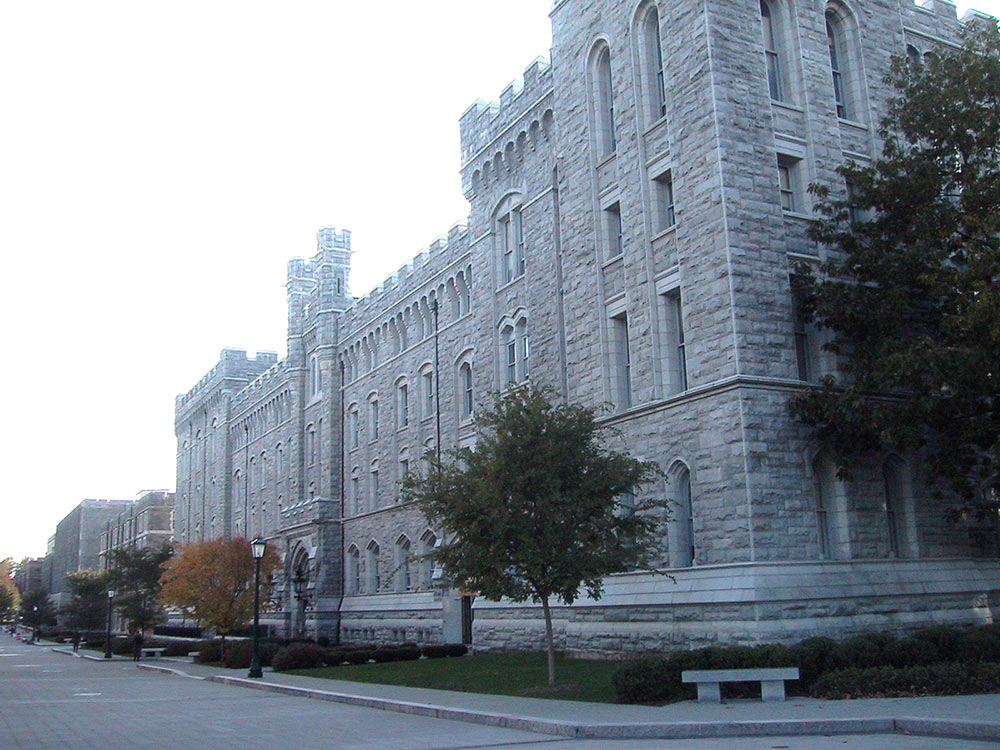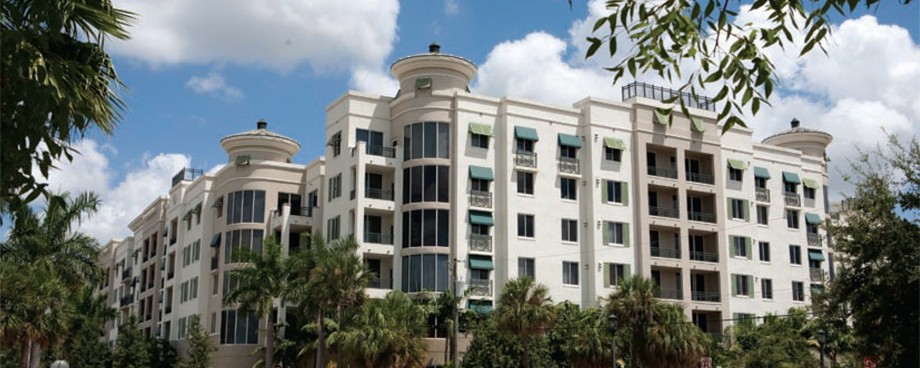Community associations are conceived by the developer who typically forms a non-profit corporation to own the land and amenities
In the case of condominiums, certain parts of the building exterior. Initially, the developer owns all of the lots or units in the association and has all of the votes; therefore, the developer controls the association. A board of directors typically consisting of the developer and other individuals professionally related to the developer is established to manage the affairs of the association including not only the physical attributes, but also the financial and administrative issues such as collecting owner assessments, holding the annual meeting, and enforcing the deed restrictions.
Early in the development process the developer, acting on behalf of the board of directors, may hire a manager or management firm and delegate much of the day-to-day operation of the association to this third-party manager. This seems to be where things get a bit confusing at times for not only the developer but for the homeowners and the manager as well. The management company often finds itself in a juggling act between meeting the desires of the developer while also acting in the best interest of their employer (the board of directors). The board has a fiduciary responsibility to make decisions and set policies that are in the best interest of the association and the manager is bound by contract to carry out the decisions and policies of the board. Sounds simple, but in the real world of community living and governance, misconceptions about the different parties’ roles and responsibilities grow right along with the community.
To clarify the roles that each party plays, you will find below a short list of the most common misconceptions about developer-controlled communities. Please keep in mind that the clarifications are based on typical scenarios and you should always refer to the governing documents for your specific community to obtain the most reliable answers.
Does the manager work for the developer? NO, Managers act at the direction of the entire board of directors, not the developer, one individual director or committee member (unless the board grants a particular individual the authority to deal with a specific matter). The management agreement between an association and a management company usually stipulates that the board should identify one person to act as liaison to the manager.
The developer pays the manager. Not so! Typically, the developer will subsidize or deficit fund the association until there are homeowners paying in sufficient assessments to cover the expenses. The association, whether funded by developer subsidy or owner assessments, pays the manager and all other contractors that perform work for the association. The board collectively decides on all such transactions.
The developer does not pay assessments. In some cases, the developer drafts the documents in such a way that it is exempt from paying regular assessments. With that get out of jail free card exemption, the developer assumes the responsibility for funding the budget until there are enough homeowners paying assessments to cover all of the expenses of the association. The board of directors (including the developer members) must set the rate of the assessment based on what each lot should pay – – assuming the community is complete and all lots were assessed.
The manager is the homeowners’ advocate. Well, not exactly. Although the manager is responsible for implementing the decisions and policies of the board, homeowners should have enough interest in their community to present their concerns to the board either in person or in writing. The best way to be heard is to submit to the management company in writing anything you would like passed on to the board. The manager does not vote on any board issues. Owners should attend board meetings to learn what’s happening in the association. Those who can’t attend meetings should read the newsletter, visit your community website or contact board or committee members for updates. If you are unaware of whether or not your association maintains a website, you should contact the manager or management firm.
The manager is responsible for choosing contractors. Keeping in mind that the management company itself is a contractor of the association, the board (with occasional recommendations made by the management company) tries to choose the best contractors for the association. The manager does not have direct control over the contractors’ actions and they are not responsible for poor performance. The manager is responsible for monitoring contractors’ performance and reporting problems to the board. The board is responsible for any subsequent actions. The developer is responsible for the quality and quantity of the amenities, replacement of defective components and addition of amenities during the development period. Once amenities are completed, they are turned over to the association for the purpose of upkeep, insuring, and use.
The developer is responsible for construction defects in individual homes. Only if the developer built the home is he responsible for defects or poor construction. The homebuilder is responsible for problems that arise relating to construction of the home, lot drainage and other issues involving an individual home within a community. In a single family development, this distinction is very clear; however, in a condominium project, the governing documents will detail those items that become the individual owner’s responsibility versus association responsibility.
To summarize, the management duties of a developer-controlled community should not differ significantly from a homeowner-controlled community. In each case, the manager works at the direction of the board of directors. The developer board just happens to be comprised of the same person(s) wearing several hats developer, director, committee member and association member. Both the manager and the board must work together and in the appropriate capacity that best serves the association and its entire membership. When these interests work in harmony, the community as a whole is strengthened.
We stand ready to assist our Community Association clients at every stage of a project. In the transition period, our attorneys consult with the newly-elected Board and facilitate compliance from the developer in turning over documents and payments owed to the Association. Our lawyers have successfully shepherded many Boards through developer transition, attesting to our many decades of experience.
FS 720.303(8) ASSOCIATION FUNDS; COMMINGLING.–
(c) Association funds may not be used by a developer to defend a civil or criminal action, administrative proceeding, or arbitration proceeding that has been filed against the developer or directors appointed to the association board by the developer, even when the subject of the action or proceeding concerns the operation of the developer-controlled association.
Florida Statutes 720 contains many provisions that are specifically valid for so-called developer-controlled associations, meaning associations that are not fully built out and the association board consists of members appointed by the developer. FS 720.303(8) clearly states that legal fees are the responsibility of the developer, as long as he/she controls the association. Admittedly, not everybody knows it, but a developer who hired a law firm to sue a homeowner for libel and/or slander and is otherwise involved in all kinds of lawsuits should take the time to confer with his law firm about specific provisions in FS 720.
DEVELOPER TRANSITION – FREQUENTLY ASKED QUESTIONS
Q: What is Developer Transition?
A: Transition (more commonly referred to as “turnover”) is simply the process in which the right to control the association shifts from the developer to the homeowners. Some homeowners mistakenly believe that “turnover” is the point in time they receive title to the buildings and common property and confirm that the developer has met all of its obligations. This is not the case. The transfer of property takes place as each home or unit is completed and sold. What is transferred at developer transition is control of the association.
Q: Why is Developer Transition significant?
A: Developer transition is an important milestone for a community. Following a successful transition, the homeowners are in control of their own community and can make all the decisions through their elected Board of Directors.
Q: When does Developer Transition occur?
A: For condominiums, transition or turnover begins when the developer has sold 15% or more of the total units. At this point, the homeowners are entitled to elect one-third (1/3) of the members of the Board. The homeowners are entitled to elect a majority of the Board three (3) years after 50% of the units have been sold, or three (3) months after 90% of the units have been sold, whichever occurs first. There are other statutory events that can trigger the transition, such as bankruptcy or receivership for the developer, which should be discussed further with legal counsel.
For homeowners associations (“HOA’s”), the homeowners are entitled to elect a majority of the Board three (3) months after 90% of the homes have been sold.
Q: Can the Developer require an earlier Transition date?
A: Yes. The developer may provide an early transition date in the community documents.
Q: For how long will the Developer be entitled to elect Board members?
A: The developer will be entitled to appoint at least one member to the Board provided the developer holds for sale at least five percent (5%) of the homes.
Q: My condominium association is ready for Developer Transition but nothing has happened. What happens next?
A: Within 75 days after the homeowners are entitled to elect a member or members of the Board, the association (as controlled by the developer) shall give not less than 60 days’ notice of an election for the members of the Board. The notice may be given by any unit owner if the developer-controlled association fails to do so.
Q: Must the homeowners accept Developer Transition?
A: Yes. When the homeowners are legally permitted to take control and control is tendered by the developer, the homeowners must accept operational responsibility.
Q: Is the developer obligated to turn over anything other than control of the Board?
A: Yes. At the time of transfer of control, the developer must deliver to the new Board, at the developer’s expense, all property of the association including, but not limited to, association funds, meeting books, original Declaration and bylaws, plans and specifications, insurance policies, agreements and service contracts and all warranties. The association’s legal counsel should also ensure that title to all parcels is deeded to the association, free and clear of liens. These items must be delivered within 90 days of the date that the homeowners are entitled to take control of the association. The association’s legal counsel can provide a comprehensive checklist of items that must be delivered by the developer.
Q: How do the homeowners confirm at Transition that the association’s finances are in good order?
A: The association’s financial records generated since the incorporation of the association through the date of turnover must be audited by an independent CPA, at the expense of the developer. The accountant determines if expenditures were made for association purposes and whether the developer paid the proper amounts of assessments.
Q: Following Transition, can the homeowners cancel or break agreements entered into by the Developer-controlled Board?
A: Yes. With the vote of 75% of the membership, a condominium association can cancel original contracts entered into by the developer for the maintenance, management or operation of the condominium property. This is significant because it allows the homeowner-controlled Board to make its own choices for management, vendors and other services such as television programming services.
Like this:
Like Loading...
Tags:
Condo & HOA Developer Issues,
Condo & HOA Turnovers


 (954) 786-7292 or visit our website www.aruba-services.com to learn more!
(954) 786-7292 or visit our website www.aruba-services.com to learn more!



 West Point Military Academy required a comprehensive structural assessment and exterior envelope renovation of the following buildings: Building 639, Water Treatment Plant, Scott Barracks, Eisenhower Barracks, The Fire House, and the Library Building. O&S Associates performed inspections and structural evaluation of the building’s exterior façade, roofs, and developed a repair program. O&S prepared repair drawings and technical specifications and made periodic observations of construction as part of construction management services.
West Point Military Academy required a comprehensive structural assessment and exterior envelope renovation of the following buildings: Building 639, Water Treatment Plant, Scott Barracks, Eisenhower Barracks, The Fire House, and the Library Building. O&S Associates performed inspections and structural evaluation of the building’s exterior façade, roofs, and developed a repair program. O&S prepared repair drawings and technical specifications and made periodic observations of construction as part of construction management services.
 If you association’s CC&Rs and bylaws have not been reviewed for five years, or more, it is time to request a legal review to ensure your documents comply with current statutes and laws. Older documents may not address modern communication options like emailing, texting and owners’ portal. Also, there have been important changes that will improve an association’s ability to collect delinquent assessments that can be negatively impacted by outdated governing documents. If your documents have not been updated, then due to the safe harbor law and joint and several liability, back owed association dues may not roll over if the house is sold. The documents can be re-written to include language that mentions if the house has past due assessments when sold, then the new owners can be held liable for these payments.
If you association’s CC&Rs and bylaws have not been reviewed for five years, or more, it is time to request a legal review to ensure your documents comply with current statutes and laws. Older documents may not address modern communication options like emailing, texting and owners’ portal. Also, there have been important changes that will improve an association’s ability to collect delinquent assessments that can be negatively impacted by outdated governing documents. If your documents have not been updated, then due to the safe harbor law and joint and several liability, back owed association dues may not roll over if the house is sold. The documents can be re-written to include language that mentions if the house has past due assessments when sold, then the new owners can be held liable for these payments.
